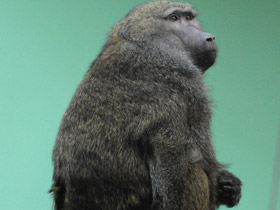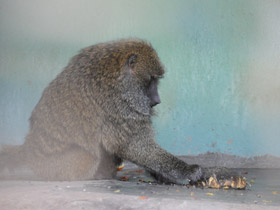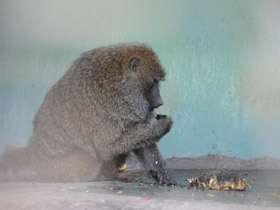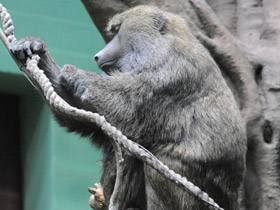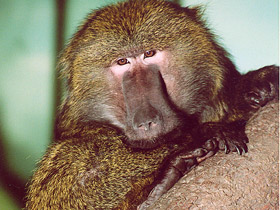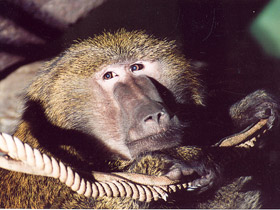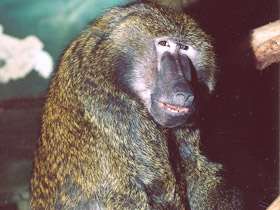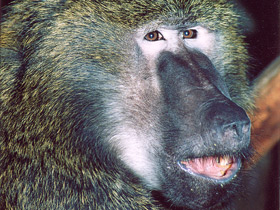The olive baboon or the Anubis baboon (Papio anubis)
The olive baboon (Papio anubis), also called the Anubis baboon, is a member of the family Cercopithecidae Old World monkeys. The species is the most wide-ranging of all baboons, being native to 25 countries throughout Africa, extending from Mali eastward to Ethiopia and Tanzania. Isolated populations are also present in some mountainous regions of the Sahara. It inhabits savannahs, steppes, and forests. The common name is derived from its coat colour, which is a shade of green-grey at a distance. A variety of communications, vocal and non-vocal, facilitate a complex social structure.
Habitat area and appearance
Papio anubis is common in Africa, from Guinea to Ethiopia. Favourite habitats of Papio anubis are open rocky areas, savannahs and light forests. The species is the size of a large dog, with males being twice as large as females and weighing between 25 and 30 kg. Because of their elongated and somewhat dog-like snout, baboons are often called dog-headed monkeys.
Lifestyle and nutrition
Papio anubis lead a mainly terrestrial life, but only spend the night in trees. They feed on shoots, stems of succulent grasses, fruits, bird eggs, reptiles, in times of drought they find bulbs and tubers on the ground, often obtaining water by digging a hole in a dry river bed. Like almost all monkeys, Papio anubis are omnivores, but they are not satisfied with the usual animal protein sources of other species and often become true predators.
Groups of adult males regularly hunt small mammals. Their powerful dagger-like tusks allow them to easily take down rabbits, antelope calves and monkeys. Recently, the predation tendency of Papio anubis has even increased. The monkeys feed almost entirely on dead animals, except for bone fragments and skulls of larger antelopes; the best pieces of meat go to the males, and all remains are eaten by females and young.
Social behaviour and reproduction
Papio anubis are usually found in herds of 30-80 individuals. The size of the herd depends on many factors, mainly on the amount and distribution of food and the presence of predators: lions and leopards.
The pride is led by Papio anubis, the largest male (leader). He has unquestioned authority and can take food away from any member of the pride or appease restless cubs with a single threatening glance. The other males are ranked in descending order according to their position in the pack, the females have a different, but less rigid, hierarchy.
Interestingly, the hierarchy is practically hereditary, as the offspring of high-ranking females are bolder and more confident in their safety and more likely to occupy a higher position later in life. Rank is very important for females, as they remain in their group for life, but is less important for males, who may change rank several times by moving to new groups.
Papio anubis reach sexual maturity at 4-6 years of age. Gestation lasts about 170 days and a single young is born. It travels hanging on its mother's belly for the first time, and older offspring are carried on the mother's back by females.
Conservation status
The olive baboon is listed as least concern on the IUCN Red List because it is widespread with a large global population and not theatended by a range-wide population decline. Competition and disease have possibly led to fewer baboons in closed forests. Like most other baboon species, it is routinely exterminated as a pest for crop raiding and small livestock predation.

















